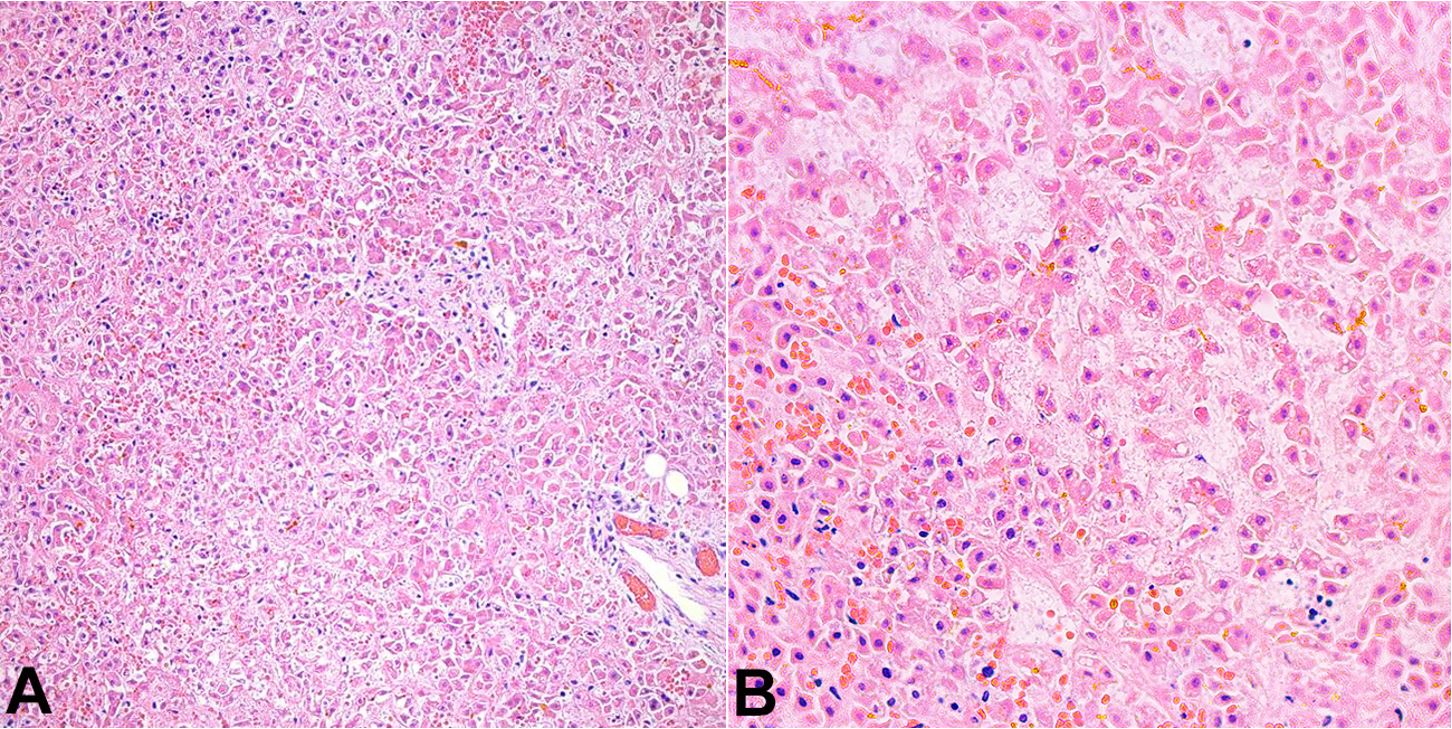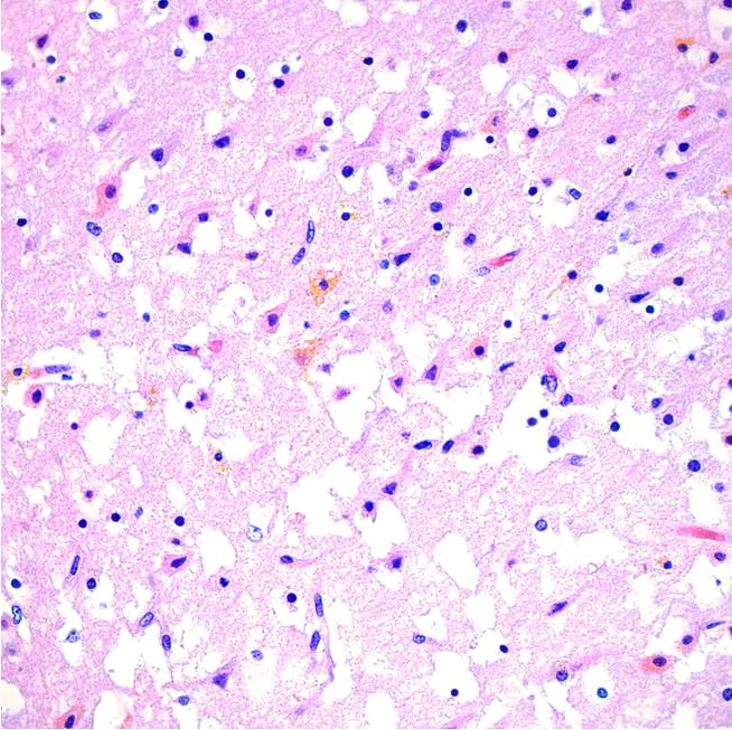ABSTRACT
Background
Neonatal acute liver failure (NALF) is a rare and life-threatening condition. It causes bilirubin to accumulate to a dangerous level in the body, causing permanent damage to vital organs such as the brain and lungs. In many cases, the etiology of NALF remains unknown.
Case presentation
We described a case of an 8-day-old baby girl who presented with poor oral intake, lethargy, and jaundice. Her clinical condition rapidly deteriorated with progression to multi-organ failure, and despite intensive resuscitation efforts, she expired. At autopsy, the most significant findings were liver necrosis, yellow hyaline membrane deposition in the lungs, and bilirubin deposition in the brain (kernicterus).
Conclusions
NALF is a rare and potentially fatal condition necessitating prompt recognition and disease-specific treatment approaches. Toxic accumulation of bilirubin in the lungs can lead to hypoxia and precipitate further ischemic injury to the liver.
Keywords
Bilirubin; Kernicterus; Brain; Lung

 Thumbnail
Thumbnail
 Thumbnail
Thumbnail
 Thumbnail
Thumbnail
 Thumbnail
Thumbnail



